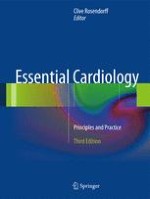Abstract
Cardiovascular disease (CVD) is the leading cause of death in women. Clear gender differences exist in the incidence, prevalence, presentation, diagnosis, treatment, and prognosis of cardiovascular diseases. Over the past 15 years, robust efforts focused on the evidence-based prevention and treatment of CVD in women have resulted in a steeper decrease in cardiovascular (CV) mortality rates in women compared to men beginning in 2000. The prominent decline in female CV mortality rates is a new phenomenon, as decreases in male CV mortality rates outpaced those in women during the 1980s and 1990s. Historically, women have been underrepresented in clinical trials investigating cardiovascular diseases. Over the past decade, the representation of women in clinical trials has improved, and nuanced treatment approaches and prevention strategies have resulted from the dedicated study of gender differences. The traditional CV research focus has been on obstructive coronary disease and the development and complications of ischemic heart disease in men. Research has shown multiple layers of complexity in the etiology and pathophysiology of cardiovascular diseases in women differing from those predominating in men. Investigation has also shown a relationship between the hormonal fluctuations women experience throughout life and the development of ischemic heart disease and arrhythmias. Therefore, cardiovascular disease processes in women should not be equated to those traditionally encountered in the male population, and these differences should alter the physicians’ approach to the female patient.
